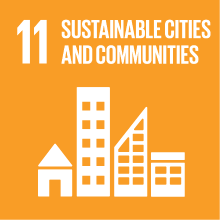MUSEOLOGY
- Academic year
- 2019/2020 Syllabus of previous years
- Official course title
- MUSEOLOGIA
- Course code
- FM0388 (AF:313047 AR:168120)
- Teaching language
- Italian
- Modality
- On campus classes
- ECTS credits
- 6
- Degree level
- Master's Degree Programme (DM270)
- Academic Discipline
- L-ART/04
- Period
- 1st Semester
- Moodle
- Go to Moodle page
Contribution of the course to the overall degree programme goals
Expected learning outcomes
- ability to apply knowledge and understanding: know how to use the specific vocabulary, in particular to present a personal study on the topics of the course, using appropriate historical and iconographic sources;
-judgment ability: know how to analyse the history of a museum, placing it in the cultural context of the time and in the wider history of museums;
-communication skills: knowing how to use specific terminology, introduced and explained in lessons or in reference texts; knowing how to compare profitably with teachers and colleagues around the topics of the course;
-learning skills: on the basis of reference material, to analyse the characteristics of a museum, placing them in the history of museums, with particular reference to the relationship with their catalogue and their audience.
Pre-requirements
Contents
The course will analyze several museum catalogues published between the Eighteenth and Nineteenth centuries, to deepen both the physical characteristics (size, publisher, relationship between text and image, engravings, photographs) and the choices of content (structure, quality of information, personality of the curators). An extensive chronological perspective will allow to reflect upon the gradual changes.
Referral texts
Borea Evelina, Le stampe dai primitivi e l’avvento della storiografia artistica illustrata, in «Prospettiva», 69, 1993, pp. 28-40
Borean Linda, Dalla galleria al «museo», un viaggio attraverso pitture, disegni e stampe nel collezionismo veneziano del Settecento, in L. Borean, S. Mason (a cura di), Il collezionismo d’arte a Venezia. Il Settecento, Venezia, Marsilio, 2009, pp. 3-47
Crivello Fabrizio, Il Medioevo riprodotto: incisioni e litografie negli studi storici antiquari, in Arti e storia nel Medioevo, a cura di E. Castelnuovo, vol.IV, Il Medioevo al passato e al presente, Torino, Einaudi, 2004, pp. 623-649
Gaehtgens Thomas W., Making an illustrated catalogue in the Enlightenment, in Gaehtgens Thomas W. e Marchesano Louis (a cura di), Display & art history. The Düsseldorf Gallery and its catalogue, Getty Publications, Los Angeles, 2011, pp. 1-51
Leca Benedict, An Art Book and Its Viewers: The "Recueil Crozat" and the Uses of Reproductive Engraving, in «Eighteenth-Century Studies» vol.38, n.4, 2005, pp. 623-649
Meyer Susanne Adina, Museo e storia dell’arte. Il cambiamento dei criteri di ordinamento tra Settecento e Ottocento, in L’intelligenza della passione. Scritti per Andrea Emiliani, a cura di F.P.Di Teodoro e M.Scolaro, Minerva Edizioni, Bologna 2001, pp.293-300
Miarelli Mariani Ilaria, Seroux d'Agincourt e Cicognara: la storia dell'arte per immagini, in Rossi Massimiliano e Caracciolo Daniela, Enciclopedismo e storiografia artistica tra Sette e Ottocento, atti della giornata di studi (26 maggio 2006), Congedo, Galatina 2008, pp. 129-150
Mondini Daniela, Apprendre à "voir" l'histoire de l'art : le discours visuel des planches de l''Histoire de l'art par les monumens' de Séroux d'Agincourt, in Histoire de l'histoire de l'art en France au XIXe siècle, Paris 2008, pp. 153-166, 510-513
Rossi Pinelli Orietta, Per una "storia dell'arte parlante" : dal Museo Capitolino (1734) al Pio-Clementino (1771-91) e alcune mutazioni nella storiografia artistica, in «Ricerche di storia dell’arte», 84, 2004 (2005), pp. 5-23
Spalletti Ettore, La documentazione figurativa dell’opera d’arte nell’epoca moderna (1750-1930), in Storia dell’arte italiana, Einaudi, Torino, 1986, vol.II, pp.419-482
Non-attending students have to arrange an integrative program with the teacher.
Assessment methods
The verification of learning will be based on the individual research that, through the study and presentation of a case study, will serve to demonstrate the acquisition of course content. The research will be presented first in the classroom with a seminar character and will then be delivered in writing and discussed individually during the exam.
The individual written research, to be submitted no later than 15 days before the examination date, must comply with these parameters: text max 20.000 characters (excluding Bibliography and Illustrations). Footnotes and final bibliography according to the rules for the theses. Illustrations at the end of the text, with list of illustrations.
The evaluation will therefore be structured as follows:
Attending students: 30% of the vote on the participation in the lessons + 40% of the vote on the research + 30% on the oral exam on the reference texts
Students not attending: 50% of the vote on the oral exam on the texts of reference + 50% of the vote on the paper.
Type of exam
Teaching methods
The course avails of the university e-learning platform (moodle.unive.it), where will be available teaching materials presented in class, bibliography that can not be found in BAUM and student research.
2030 Agenda for Sustainable Development Goals
This subject deals with topics related to the macro-area "Cities, infrastructure and social capital" and contributes to the achievement of one or more goals of U. N. Agenda for Sustainable Development


